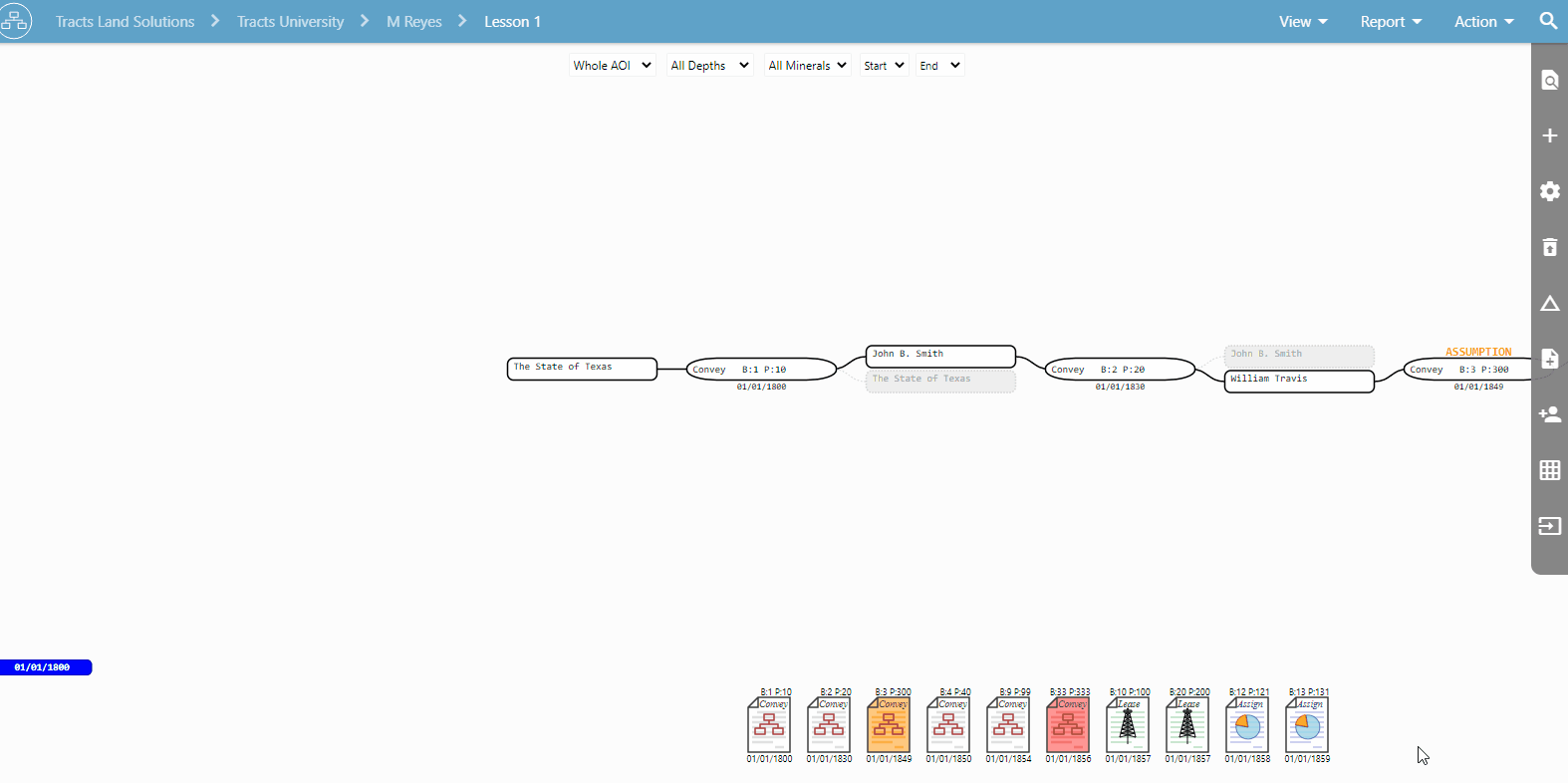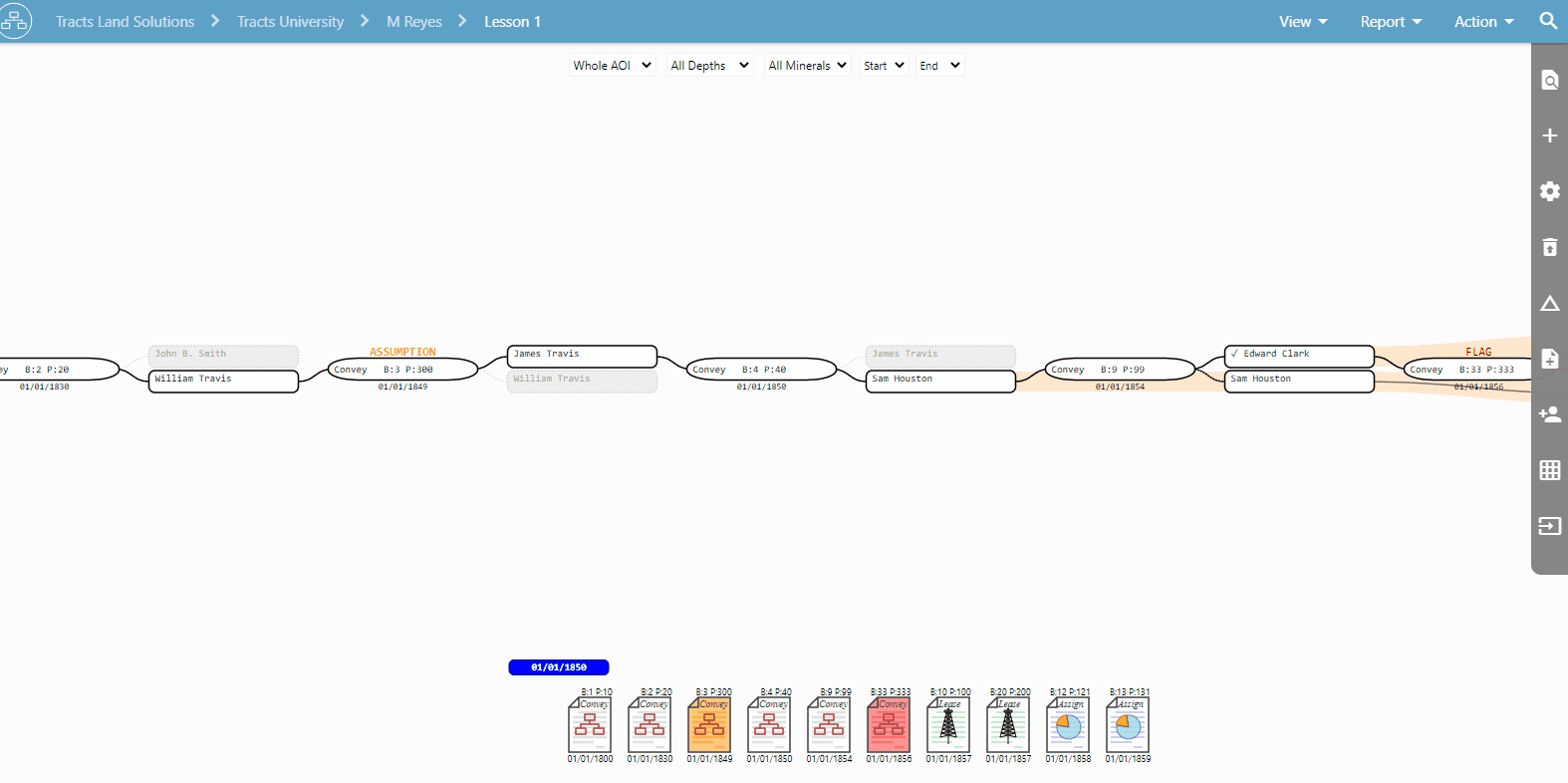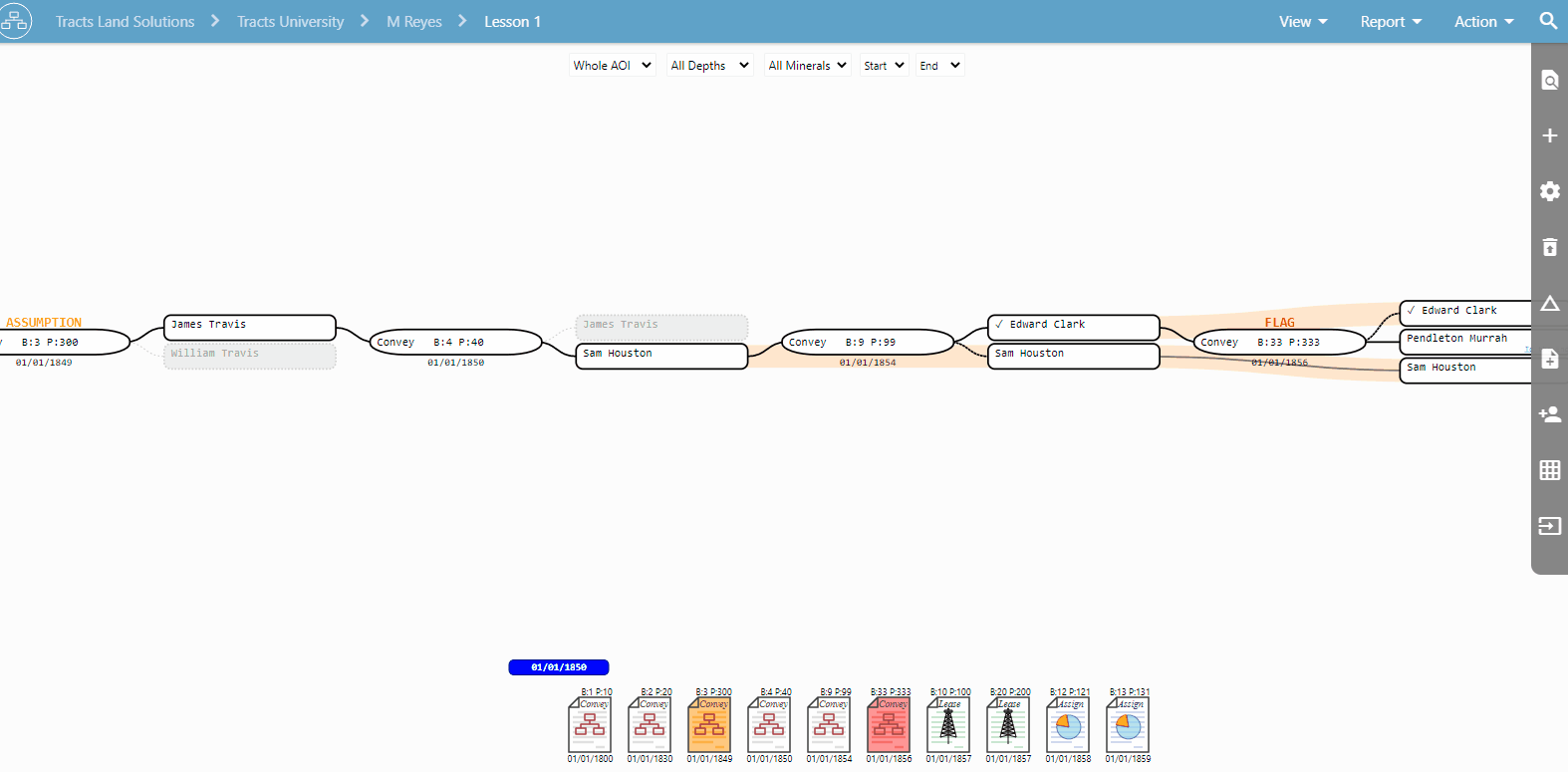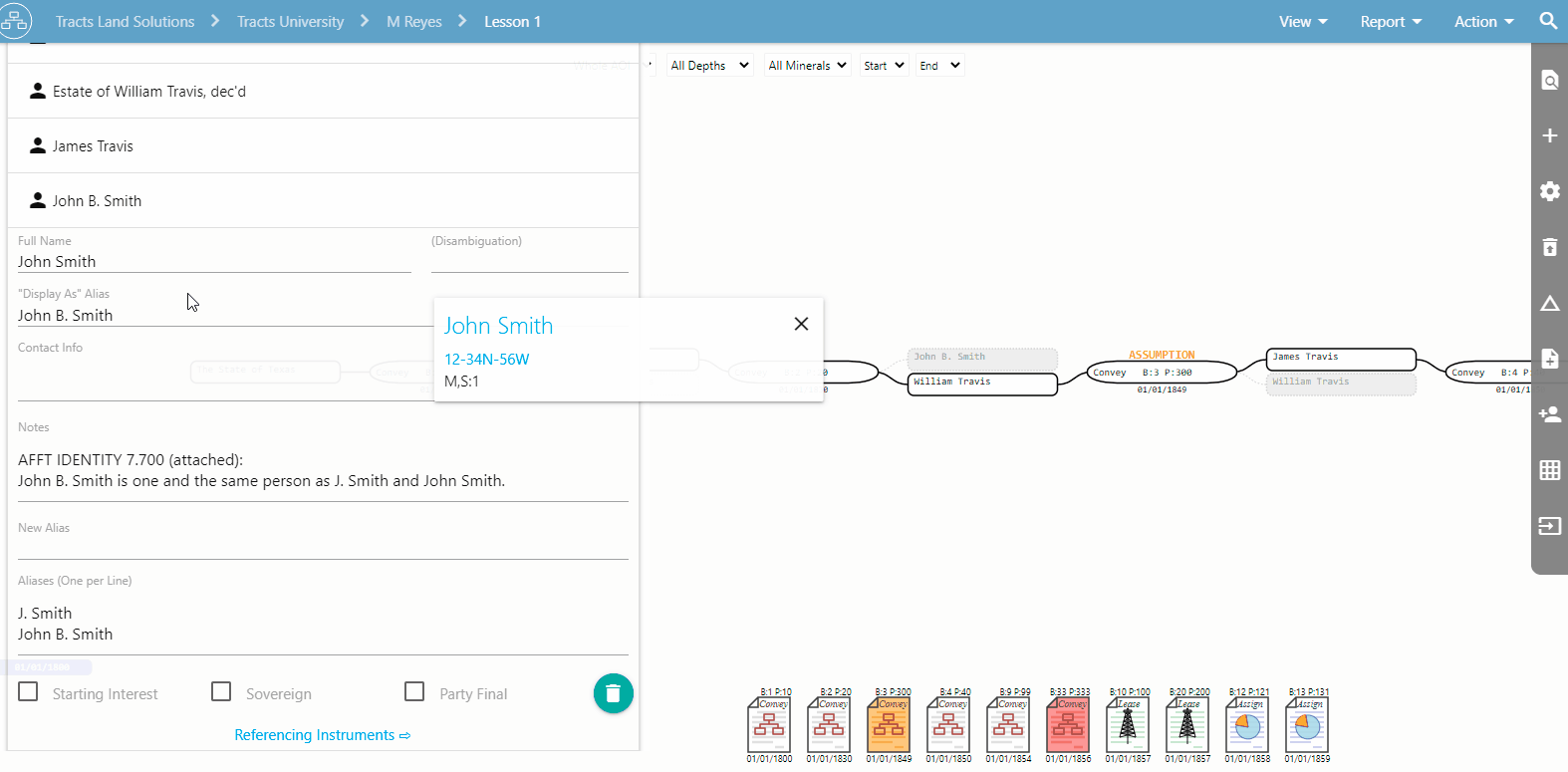Our computation engine can only calculate ownership accurately if you have named parties accurately in each instrument.
The Parties & Aliases tool must be used correctly, in order to:
- Keep separate parties separate;
- Distinguish interests owned by the same party in different capacities;
- Identify separate names as referencing the same party, in the same capacity.
Accessing the Tool
In the toolbar on the side of your screen:
Click on the icon that has the person with a plus sign next to it
Through a document:
Select the Grantor/Lessor tab
Through a party node:
Click on a party node. Then, click on the party’s name in blue.
Inside the Tool
Full Name
- Usually, this is first generated when you create a digital notecard.
- The full name will replace any alias named in a notecard entered.
- You can hover over the name in any notecard to see the name entered.
Disambiguation
- Allows you to distinguish between two different people with the same legal name.
- Examples are Juniors and Seniors or other cases of the same name, different DOB.
- Disambiguation can be set using parentheses in the notecard or by entering in this field.
“Display As” Alias
- This will change the name that appears within the flow chart and other parts of the system.
- Doesn’t affect computations
- Useful for long names such as trusts
Contact Info
- The details need to be on separate lines within this field.
- Along with Notes, this data will be populated in the export of the Flat Ownership report.
Notes
- Extra information about the party you think is useful
- Leave notes here explaining why you created an alias, and leave the same note in the card where that alias interacts in title.
New Alias
- Enter new aliases in the New Alias field and hit Enter
- Those names will populate in the Aliases field
Checkboxes
- Check Starting Interest to indicate that a party is the first in your chain who conveyed a particular interest out. Elsewhere, we’ll discuss assigning a particular interest to that party.
- Check Sovereign to indicate that a party owns as a government entity and only leasehold can be transferred.
- Check Party Final to indicate that you have fully indexed a party and the ownership calculated by Tracts is therefore current.
Referencing Instruments
Click the Referencing Instruments link to see the instruments in which a party interacts in title.
When TO Create Aliases
Create an Alias to let Tracts know when 1 party is named in multiple ways but owning in the same capacity.
Ideal Scenarios:
- You named John Smith as Grantee. He later conveys as J. Smith, and then again as John B. Smith. You have an affidavit of identity stating that these names reference the same person.
- One instrument identifies “Jane Smith, SSP” and another identifies “Jane Smith, single”.
- “John Smith, Sheriff of Tarrant County” and “Bob Smith, Sheriff of Tarrant County” could both be aliases of “Tarrant County Sheriff”.
- John Smith, Executor of the Estate of Bob Smith, dec’d can be an alias of Estate of Bob Smith, dec’d
When NOT TO create Aliases
Sometimes the same party owns interests in different capacities.
In these cases, we have to keep parties separate and NOT create aliases:
- “John Smith, JT” is not an alias of “John Smith”.
- “John Smith, Trustee” is not an alias of “John Smith”.
- “The John Smith Trust” is not an alias of “John Smith”.
- “The Bob Smith Trust, for the benefit of John Smith” is not an alias of “John Smith”.
- “Estate of John Smith, dec’d” is not an alias of “John Smith”. *In the case of probates, you should often put both entities on separate Grantor lines, though “Estate of…” will likely carry zero interest.
- “Bob Smith, Trustee of the Jane Smith Trust” is not an alias of “John Smith, Trustee of the Jane Smith Trust”.
- “John Smith, SSP” is not an alias of “John Smith, husband of Jane Smith”.
- “John Smith and Jane Smith, husband and wife” is not an alias of either individual. Further, these parties should be on separate lines.
- “John Smith and Jane Smith, husband and wife” is not an alias of either individual. Further, these parties should be on separate lines.
- “John Smith, Life Estate” is not an alias of “John Smith”.
- If 2 separate parties are beneficiaries of the same trust, they are not aliases of that trust or of each other.
- Trustees of the same trust/bank and even successor trustees of the same trust/bank are not aliases of each other.



